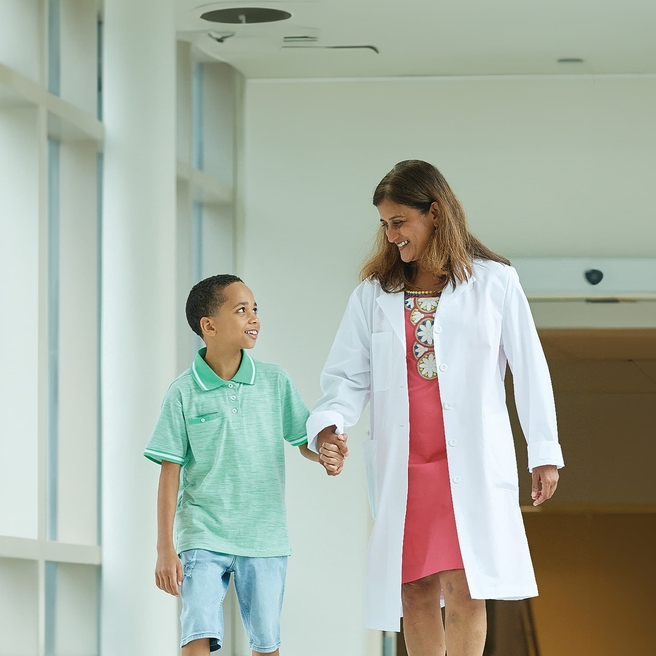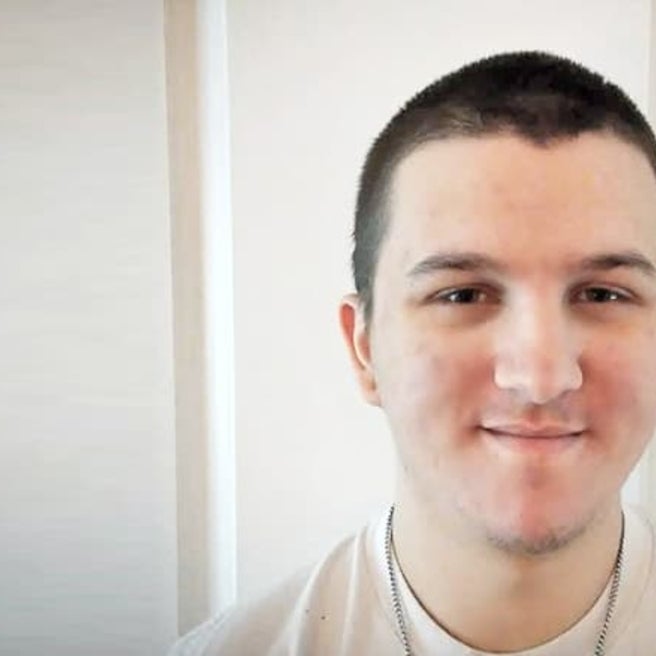What is a ventricular septal defect?
A ventricular septal defect (VSD) is an opening in the tissue (the septum) between the heart's lower chambers (the ventricles). A VSD is one of the congenital heart diseases referred to as "a hole in the heart.” It is also one of the most common forms of congenital heart disease.
When the VSD is large, blood can pass through the hole into the lungs. This means the heart may have to pump harder to deliver enough oxygen to the body. Patients with a small VSD usually do not have any symptoms.
Often, children with a VSD also have other heart abnormalities.

Signs and symptoms of a ventricular septal defect
The symptoms of a VSD don’t usually start right away but may appear in the first few weeks of life. These symptoms include:
- Rapid heartbeat
- Difficulty feeding, tiring easily, or sweating when eating
- Rapid breathing (the skin between the ribs and under the chest pulls in with each breath)
- Poor weight gain
- Heart murmur, or abnormal sound when a doctor listens with a stethoscope
Testing and diagnosis for a ventricular septal defect
A VSD may be diagnosed before birth using a special ultrasound called a fetal echocardiogram. The Fetal Heart Program at Children’s Hospital of Philadelphia (CHOP) leads the nation in the evaluation, diagnosis and treatment of fetal heart disease before birth. Our experts will monitor both you and your baby throughout your pregnancy and create a plan for labor and care for your newborn after birth. It is possible, however, for a VSD to be missed on a fetal echocardiogram because not much blood flows across the hole until a baby is born.
A VSD can also be diagnosed soon after birth. Sometimes, a VSD isn't diagnosed until your child is older.
Diagnosing a ventricular septal defect may require some or all of these tests:
- Electrocardiogram (EKG or ECG), which is a record of the electrical activity of the heart
- Echocardiogram (also called echo or ultrasound), which is when sound waves create an image of the heart
- Chest X-ray
- Cardiac MRI, or CT scan, which is a 3D image that shows the heart's structures in detail
Sometimes, cardiac catheterization will be required. A thin, flexible tube (catheter) is inserted through a vein or artery in the leg and into the heart to provide detailed information about the structure and function of the heart and lungs.
It is important that a VSD be diagnosed and treated as needed, or the heart, as well as the arteries between the heart and lungs, might become damaged.
Treatment for a ventricular septal defect
Treatment for a ventricular septal defect will depend on your child's health and the size of the VSD. Your cardiologist may wait to see if the VSD will close on its own. Many small VSDs will close on their own within two years.
If your child needs surgery to close a VSD, the surgery will usually happen in the first six months of life. Until your child is ready for surgery, they may have to take medicine and eat a higher-calorie diet to help with the symptoms and encourage growth.
To repair a VSD, a cardiothoracic surgeon will place a patch or use stitches to close the hole. This is an open-heart surgery. CHOP’s cardiothoracic surgeons are among the most experienced in the nation in VSD closure.

In special cases, ventricular septal defects can be closed during a cardiac catheterization. During this procedure, an interventional cardiologist will insert a thin tube (catheter) through a vein and/or artery in the leg, then guide it to the heart. A device is then inserted to close the VSD. This is usually done with both ultrasound and X-ray to make sure the device is positioned correctly and securely.
This procedure is only used for older children and teens, and only with certain types of VSDs.
Outlook for a ventricular septal defect
Because of enormous strides in medicine and technology, today most children with heart conditions go on to lead healthy, productive lives.
Follow-up care for a ventricular septal defect
Through age 18
After a VSD repair, many children recover quickly and don't experience additional cardiac problems. They must see a pediatric cardiologist for checkups, and some children remain on medicine. Rarely, additional surgery is required.
If your child has other heart abnormalities, more follow-up care will be required.
Into adulthood
Our pediatric cardiologists follow patients until they are young adults. It's important that adults who were born with a VSD continue to see a cardiologist. The Philadelphia Adult Congenital Heart Center, a joint program of CHOP and Penn Medicine, meets the unique needs of adults who were born with heart defects. At CHOP’s Cardiac Center, we support our adolescent and young adult patients through a smooth and seamless transition to adult cardiology care at the Philadelphia Adult Congenital Heart Center or, if desired, to a cardiologist with congenital heart disease expertise in another location.

Why Choose Us
Our specialists are leading the way in the diagnosis, treatment, and research of congenital and acquired heart conditions.

Patient Outcomes at the Cardiac Center
Children’s Hospital of Philadelphia's pediatric heart surgery survival rates are among the best in the nation.
Resources to help
Cardiac Center Resources
We know that caring for a child with a heart condition can be stressful. To help you find answers to your questions – either before or after visiting the Cardiac Center – we’ve created this list of educational health resources.
Reviewed by Meryl S. Cohen, MD, MSEd
Reviewed on 08/05/2024


